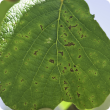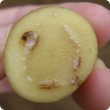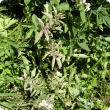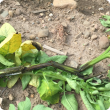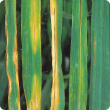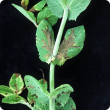Crops
The Department of Primary Industries and Regional Development continues to support the growth and international competitiveness of all crop industries in Western Australia.
With a 2400 kilometre span from its tropical north to its temperate south, WA supports a broad range of cropping industries from rain-fed winter cereals through to irrigated horticultural crops.
In the 2012/13 year the WA cropping industries exported a total of $3.9 billion which comprised: $3.1 billion of cereals, $859 million of pulses, pastures and oilseeds, $142 million of horticultural crops. The major contributors to these exports were wheat ($2.7 billion), canola ($756 million), barley ($377 million), lupins ($42 million), carrots at $48 million, oats ($12 million), and strawberries at $5.5 million.
Articles
Filter by search
Filter by topic
- (-) Remove Diseases filter Diseases
- Pests, weeds & diseases (10) Apply Pests, weeds & diseases filter
- (-) Remove Bacteria filter Bacteria
- Horticulture (7) Apply Horticulture filter
- Vegetables (5) Apply Vegetables filter
- Plant biosecurity (5) Apply Plant biosecurity filter
- Biosecurity (5) Apply Biosecurity filter
- Biosecurity & quarantine (5) Apply Biosecurity & quarantine filter
- Potatoes (4) Apply Potatoes filter
- Grains (3) Apply Grains filter
- Crop diseases (3) Apply Crop diseases filter
- Tomatoes (2) Apply Tomatoes filter
- Pulses (2) Apply Pulses filter
- Fungi (2) Apply Fungi filter
- Fruit (2) Apply Fruit filter
- Oats (2) Apply Oats filter
- Mechanical, physical and cultural (1) Apply Mechanical, physical and cultural filter
- Lupins (1) Apply Lupins filter
- Grains research & development (1) Apply Grains research & development filter
- Hay production (1) Apply Hay production filter
- Minor fruits (1) Apply Minor fruits filter
- Pests (1) Apply Pests filter
- Fungicides (1) Apply Fungicides filter
- Wheat (1) Apply Wheat filter
- Viruses & virus-like (1) Apply Viruses & virus-like filter
- Nematodes (1) Apply Nematodes filter
- Brussels sprouts (1) Apply Brussels sprouts filter
- Canola (1) Apply Canola filter
- Cabbage (1) Apply Cabbage filter
- Broccoli (1) Apply Broccoli filter
- Barley (1) Apply Barley filter
- Cauliflower (1) Apply Cauliflower filter
- Chemicals (1) Apply Chemicals filter
- Control methods (1) Apply Control methods filter
- Citrus (1) Apply Citrus filter
- Chinese cabbage (1) Apply Chinese cabbage filter
- Field peas (1) Apply Field peas filter






